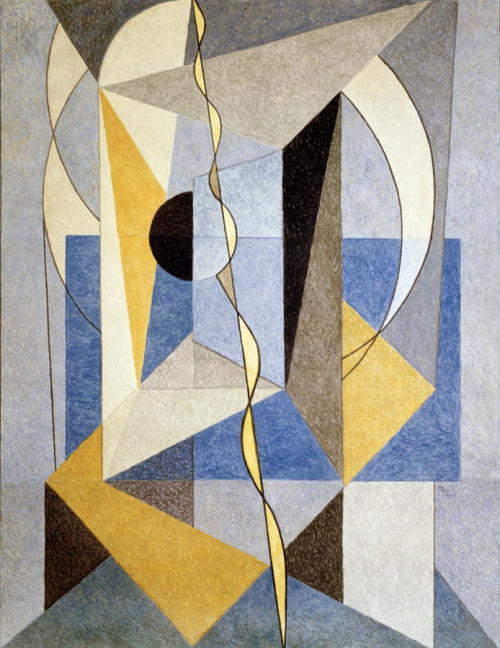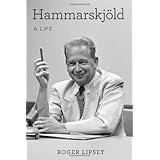" I will incline mine ear……"
It's probably another of the kinks in my way of looking at the world, and listening to the world, but there are a number of words on the back page of my mental Lexicon and Thesaurus that I treat with caution if not some disdain. I recognise the pervasiveness of some of those words in the discourse and thought inside and outside the church. But that simply adds to the suspicions that inform my hermeneutic!
One of those words on my back page is 'leadership'. When most books on leadership are written by those who count themselves as leaders then an hermeneutic of suspicion takes on a different order of importance. Last week on Radio 4 there was a discussion on the 100 books recommended for leaders in the armed forces. They were books on the psychology of influence, biographies of movers and shakers, text books on tactics and management, the psychology of combat and command, military history and hierarchical systems. They weren't only books on leadership, but books leaders should read. Amongst the lives presented as a model of leadership to be studied and learned from was the biography of Steve Jobs, founder of Apple.
I was given that book for Christmas, and read it, fascinated by the courage and perseverance, the ruthlessness and cunning, his imaginative grasp of marketing linked to human motivation, his insatiable desire to succeed and to dominate. No question – an impressive leader of a company that still leads in product innovation, market saturation, commercial savvy and gilt-edged instinct. Here comes a stupid question – would Steve Jobs have made a good church leader? Would the values and motives, his goals and management style have made the Church a leading global innovator in people transformation?
I know, it's probably a question flawed by category confusions. And yet. None of the characteristics and qualities and values that drove Jobs sound strange in the receptive ears of a secular consumerism that provides the psychological engine of globalised commercial rivalry.
Here's a curious observation. Some of the most influential leaders did not set out to lead – they live a style of life that is attractive, impressive, influential, fascinating and even successful – however we define success. All of this comes out of my reading of Lipsey's biography of Dag Hammarskjold, and in particular the sense of the person Hammarskjold was. He started his tenure at the United Nations by stating the values by which he lived and would serve the UN. They are almost diametrically opposed to those of a Steve Jobs, perhaps because Hammarskjold's goal in life was at the other end of the human spectrum. Not self expression in global innovation in technology, but self-giving in global transformation of human relations. That all sounds judgemental, over-simple, and setting Jobs up for an unfair put down. But that isn't what I'm suggesting. Apart from anything else a strong case can be made for advanced computer technology as a real enahncement of human life, which was also part of Jobs' motivation.
But the difference isn't only qualitative, it is a difference of worldview. Hammarskjold's values, principles and vision were formed in the depths of a personality that was self-consciously Christian, intellectually rich, emotionally painful and intensely, even ruthlessly ethical in its demands upon his own integrity. Reading of the determined force of his moral personality raises for me profound questions about the nature of leadership within the Christian Church. Yes Hammarskjold was engaged in the world of action; and yes he exercised considerable power, diplomatic, political and personal; and yes admittedly not everyone saw things his way and he had to fight to retain the freedom of the peacemaker and the confidence placed in a trusted mediator.
The time is long overdue when the church requires to examine critically the models of leadership it admires, the missional mindset it desires, and the vision to which it aspires. Because Christian leadership is essentially cruciform, inevitably sacrificial, inescapably accountable, and unflinchingly faithful to the one who was rich but for our sakes became poor; the one who did not count equality with God a thing to be grasped, but emptied himself; the one who came not to be served but to serve and to give his life as a ransom for many.
Without overtly saying so, Hammarskjold's life drew its energy, its ethical imperatives and its core values from a deep and enduring commitment to the imitation of Christ. The book of that name, along with the New Testament, were constant companions, reservoirs of spiritual and personal nourishment, and guides to an inner life that surged outward into a life of public service and high ideals. If ever we look for 100 books on Christian leadership, I would hope that somewhere on that list this remarkable man would appear as one who in the midst of his own days, followed faithfully after Christ.
I talk a lot.
Teaching.
Preaching.
Committes.
Conversations.
On the phone.
In the coffee queue.
As Merton said, "Words are the sounds that interrupt my silence."
In Christian discipleship, much emphasis is put today on doing, acting, performing, embodying. And yes there is a kind of passivity that is either laziness or boredom with this whole Christian thing. If you've never felt it you're lucky. It isn't loss of love so much as loss of vision, energy and inward motive which together add up to desire for God.
So I welcome the wise words of Philip Toynbee in his unjustly forgotten, even if dated Journal, Part of a Journey.
"To silence the mind is not enough. it has to be a listening silence. Very hard to get there; harder still to stay there."
Yes that's true. And it may be that the word discipleship has become a legalistic doing word, an abstract noun given content by action. Whereas to be a disciple is describing word, a statement of being, a follower, one who has made a commitment in to a relationship.
And relationships need time, communication, and the deepest relationships, communion. A listening silence pays the other the courtesy of attention, hearing and response – all of which are born in silence.
In the beginning was the Word….all things were made through him, and without him was not anything made that was made…
When I consider the heavens, the work of your hands….what are human beings that you care for them, mortal people that you keep them in mind?

The new images from the Herschel telescope mirror, 3.5 metres in diameter.
This image reminded me of the work of the late Rebecca Elson. I wrote about her in an earlier post here. I quoted the following poem, written by Elson, a brilliant astro-physicist, a deeply thoughtful human being, and one who, suffering a terminal cancer, explored her own mortality with courage, honesty and a deep longing for more.
Let there Always be Light (Searching for Dark Matter)
For this we go out dark nights, searching
For the dimmest stars,
For signs of unseen things:
To weigh us down.
To stop the universe
From rushing on and on:
Into its own beyond
Till it exhausts itself and lies down cold,
Its last star going out.
Whatever they turn out to be,
Let there be swarms of them,
Enough for immortality,
Always a star where we can warm ourselves.
Let there be enough to bring it back
From its own edges,
To bring us all so close we ignite
The bright spark of resurrection.
I find few things more moving than those moments when human beings, and perhaps most of all pure scientists, who recognise mortality as both the given limits of life, and yet hold to a deeper trust that there is that which enables such limits to be transcended by a power and creativity beyond our ken….
And the Word became flesh and dwelt amongst us, and we beheld his glory, full of grace and truth.

Fresco painted by the Swedish artist, Bo Beskow, illuminated within the Quiet Room at UN Headquarters, New York.
"This is a room devoted to peace
and those who are giving their
lives for peace. It is a room of quiet
where only thoughts should speak."
(Dag Hammarskjold)
Blessed are the peacemakers, for they shall be called the children of God.
Lord, make me an instrument of thy peace.
So far as it depends on you, live at peace with all people.
Our work for peace must begin within the private world of each one of
us. To build for man a world without fear, we must be without fear. To
build a world of justice, we must be just. (Dag Hammarskjold)
When was the theme of peace,
in its length and breadth,
and height and depth,
last on the agenda of your local church meeting
as an essential missional question for followers of Jesus?

In conversation with Jason the Forsythian when we met in Scotland he was guilty of shameless name-dropping:) He had been in the company of Archbishop Rowan Williams no less, a Christian thinker whose writing is often complex enough to both frustrate and satisfy; frustrating because you know he is saying something important and profound, satisfying because he never short changes the reader by dumbing down, cutting corners, or pretending all the jig saw pieces are even there. His return to academia will I hope mean he will begin to draw together much of his thought into a substantial vision of God enriched from important influences of Eastern and Western theology.
But anyway, Williams mentioned to Jason the new biography of Dag Hammarskjold, and commended it warmly. His blurb is on the dust jacket:
"And admirably judicious and comprehensive – and long overdue – study of one of the most remarkable figures of the twentieth century, whose presence remains both spiritually and politically significant for an age of violently confused international relations."
Another former Archbishop, this time K G Hammar of the Church of Sweden, also commends the volume:
"A great book about a great man who must not be forgotten in a time which more than ever needs to see the footprints of Dag Hammarskjold – the combination of wholehearted engagement in the world and familiarity with the spiritual journey inwards."
My own debt to Hammarskjold goes back to the first reading of Markings, and how many people have to say that. It is a quite extraordinary book, a reservoir of wisdom, deep, fresh, reflecting shimmering sunshine, some blue sky but also clouds and the shadow of mountains. Maybe it would be better described as a Scottish loch then. But the maxims and reflections, the prayers and the psalms, the confessions and thanksgivings, the self critique and the compassionate outwardness, and through it all the sense of the reality of a power that is transcendent, suffusing life with mercy and hopefulness, – through it all, the sense of God.
I've often wondered what a book club would make of it, filled as it is with the heart and the mind of a great human being, part of whose greatness was his own sense of mortality, fallibility and the urgency of what we do with the gift of our life. One of his best known maxims remains true as a reminder to the Church of what its life is about, what its mission is to be:
"In our era, the road to holiness necessarily passes through the world of action."
Yes, and yes again. Lipsey's aim in this biography is to explore the importance of Hammarskjold's inner life as the engine and energy of his outward activities as an humanitarian, diplomat and man of faith caught up in the world of politics, power and international tensions. That small book of markings, found on his bedside table after his death, remains a classic of spiritual honesty, moral striving and the felt tension between disciplined duty and enabling grace from beyond ourselves.